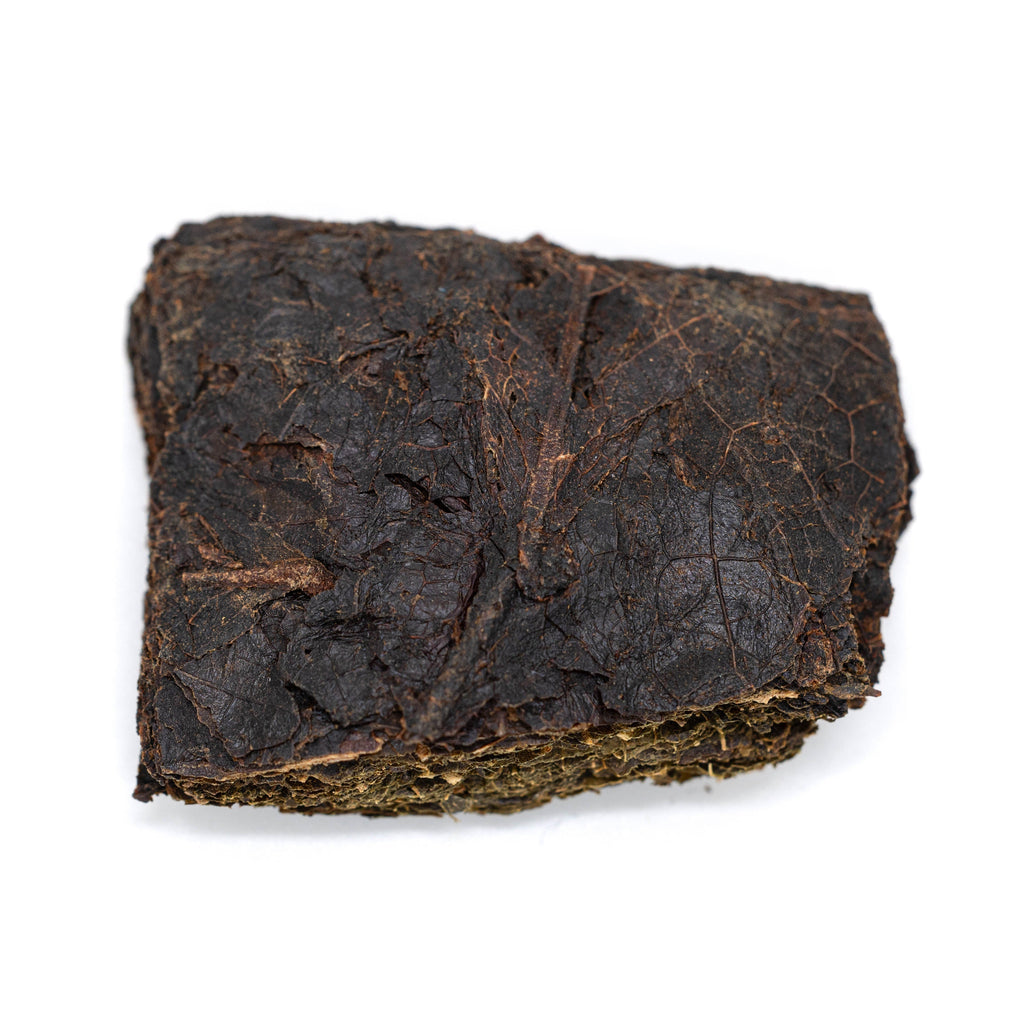Goishicha

Goishicha (碁石茶)
Goishicha is a twice-fermented Japanese tea with a unique, tangy flavor.
Name
- 碁 (pronounced Go in Japanese): refers to Go, the strategy game played with black and white stones.
- 石 (pronounced Ishi in Japanese): means stone, in reference here to the pieces of the game Go.
- 茶 (pronounced Cha in Japanese): means tea.
Together, 碁石茶 (Goishicha) refers to the shape and color of the tea. After having been cut into small squares, they slowly darken as they dry in the sun.
Production
Goishicha undergoes a multi-stage production process that lasts nearly two months.
- Steaming: Before beginning, the leaves are steamed for a few hours.
- Fermentation: The leaves undergo two fermentation stages. First, in aerobic fermentation, they are piled into heaps and exposed to mold growth. Then, they are transferred into barrels, tightly compressed, and sealed. In this dark and oxygen-sparse environment, they undergo anaerobic fermentation, where lactic acid bacteria transform the sugars of the leaf into acids.
- Drying: Once fermentation is complete, the compressed leaves are removed, cut into squares, and left to dry on in the sun.
Flavor
Those expecting the deep, earthy aromas of Hei Cha or Shu Puer will find Goishicha to be an entirely different experience. Its lactic acid fermentation produces a flavor that is tangy, briny, and distinctly sour, placing it closer to fermented foods like sauerkraut, kimchi, yogurt, and kefir.
We can thank — or perhaps blame? — this distinctive flavor on the microbes that transform the plant's sugars into lactic acid. This specific transformation gives Goishicha its signature sharpness, setting it far apart from other Japanese teas.
